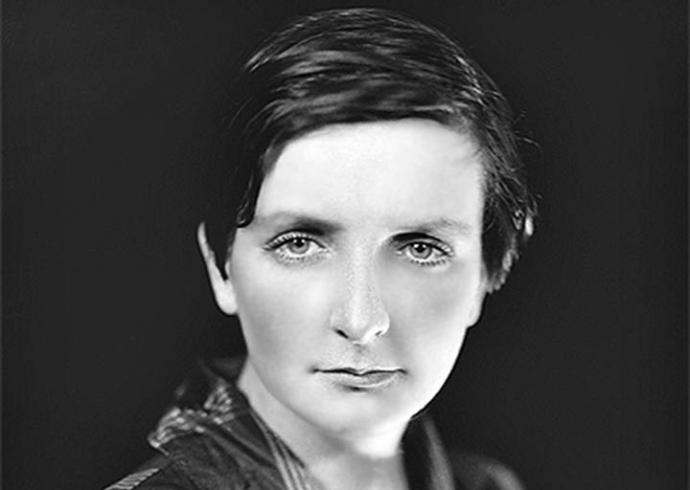The same expression may be used now, in a very different sense, considering O’Brien a “real lady”, for the high quality of her literary work; her love for Spain; her interest in Spanish literary and historical figures such as Teresa de Jesús, Ana de Mendoza, Jacinto Benavente and Miguel de Cervantes; her courage approaching certain subjects provoked that two of her novels, Mary Lavelle (1936) and Land of spices (1941) were banned in Ireland for opposing the rigid parameters of sexual moral imposed by Eamon de Valera government and another one, Farewell Spain (1937), were banned in Spain, for her support to the Republic values and her criticism against Franco’s military coup; and the feminist character of her literature, presenting independent transgressive women, who take their own decisions and fight for their convictions, as it happens in the novel we are discussing in this article.
Kate O’Brien’s contribution to Irish literature has been receiving a due acknowledgment in her country for the last years. She was featured in a 2015 Irish Times celebration of Irish women writers, and since that date several studies about her work have been published. However, Spain, and specifically the cities of Pastrana, Avila and Madrid, have still an unpaid debt with Kate O’Brien. Luckily, J. Antonio Sierra’s efforts made it possible that the small town of Gotarrendura (Avila) gave her name to one of its streets in 2007, and, in 2011, also a street in the city of Avila (capital of the province) was named after her.
In her novel Teresa de Avila (1951), O’Brien highlights Teresa’s genius and literary quality and her capacity to fight for her ideals, without theological or mystical considerations. This novel would be enough to make Kate O’ Brien deserve the honour of being awarded the title of Adoptive Daughter of the Town of Avila, in the fiftieth anniversary of her death, something that Sierra has requested from all the political parties which make part of Avila Town Council. This anniversary would also be a perfect occasion to organise cultural events around Kate O’Brien’s work, as it already happened in September 2011.
I would like to briefly speak about her novel That Lady, a novel which would also deserve a homage to the writer in Pastrana and Madrid, the two main places where Ana de Mendoza’s story takes place. In That Lady, Kate O’Brien vindicates the figure of a woman, made prisoner and psychologically tortured by the King Philip II, without being judged or sentenced, just to satisfy the revengeful feelings of a man who is divided between the most extreme cruelty and the obsessive prosecution of an unattainable redemption through religion.
In this novel, Ana de Mendoza appears as an intelligent woman, who efficiently manages her lands, including her industry of silk production. A woman full of political insight; good friend of her friends; with a talent for conversation, full of irony and sense of humour. Ana has been the victim of numerous limitations imposed by a deeply patriarchal society: being almost a child she was married to a much older man; while he lived, she depended on his criteria and decisions, as expected from a submissive wife; she fulfilled the inescapable obligation of providing heirs to her husband, giving birth year after year, even if she acknowledged not to feel very maternal; after her husband’s death she had to dress in black for the rest of her life and, as the widow of a respectable noble man, her independence and freedom of choice was highly limited. Fate imposed on her another challenge, an attack to her beauty, a woman’s only assets at the time, when she lost her right eye being very young, already betrothed to Ruy Gómez, but before marrying him.
But, in spite of all these limitations, Ana de Mendoza knows how to enjoy life; establishes a caring and affectionate relationship with her youngest children, her daughter Anichu and her son Fernando; shares a sincere friendship with Bernardina, her housekeeper and companion. Ana is a woman who consciously takes the free decision of starting a sexual relationship with Antonio Pérez, even knowing he is married and she is acting against her own religious beliefs, at an age when she may be considered “an old woman” at her time. With Ruy Gómez, she had known an affectionate, friendly relationship, exempt from passion; with Antonio she will enjoy sexual pleasure and will involve herself in a love story which will compromise her health, her freedom and her life.
She will never accept the king’s dominant and wicked imposition about her private life, in spite of the friendship and good relationship they had shared for many years. She will not submit to his threats, his moral blackmail, the humiliations and tortures imposed on her while her incarceration in the Tower of Pinto, or in her own house of Pastrana, changed into a gloomy prison of walled windows during the last time of her life. She will stay faithful to the defense of her moral freedom, her right to her private life, and will even protect her lover, Antonio Pérez, helping him flee from Spain.
O’Brien highlights Ana’s vitality, independence, clarity of judgment, integrity, and dignity, in the context of deep injustices and discriminations against women in the sixteenth century. She is a woman victim of the jealousy and contradictions of a man who exerts all his power upon his kingdom and upon her. At the same time, Kate O’Brien makes a deep criticism of the political turn of the king towards absolutist positions, as opposed to more liberal ones represented by Ana de Mendoza, Ruy Gómez, Antonio Pérez and the cardinal Quiroga, archbishop of Toledo. Once again, Kate O’ Brien’s novel tackles both political and social criticism together with the defense of women’s freedom and capacity of decision-making.
Sent by José Antonio Sierra



















 Si (
Si ( No(
No(






